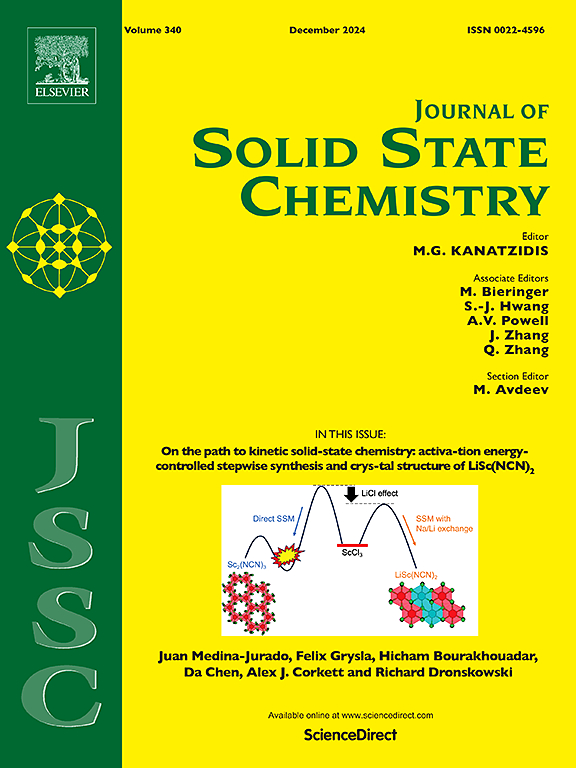Preparation of cesium ion sieve composite material and its adsorption properties of Cs+
IF 3.2
3区 化学
Q2 CHEMISTRY, INORGANIC & NUCLEAR
引用次数: 0
Abstract
In the previous work, our research group adopted sol-gel technology to incorporate trace Zn2+ into the Ti–O lattice of Cs2Ti6O13 to improve the cell structure and prepared zinc-doped titanate precursor material (CZnTO). This precursor is acid-treated to form a zinc-doped protonated titanate (HZnTO). Based on previous studies in our research group, this paper proposed a membrane support and creating technology for preparing powdered zinc-doped titanium-based cesium ion sieves. It made a batch adsorption test to explore the adsorption performance of Cs+. The main research contents are as follows: A phase transition synthesis method is used to composite PVDF material with powdered ion sieve HZnTO to form a microporous hydrophobic polymer membrane HZnTO@PVDF. The higher the pH in the solution, the greater its saturated adsorption capacity. The composite membrane maintains good stability in both acidic and alkaline solutions. Compared with the powdered ion sieves, HZnTO@PVDF the adsorption rate is significantly faster, reaching saturated adsorption capacity in about 2 h in 3000 mg/L Cs+ solution. HZnTO @ PVDF has good cyclic adsorption stability, maintaining 90.33 % of the initial adsorption capacity after five adsorption-desorption cycles. Moreover, after 5 cycles, the composite membrane still maintained the integrity of its original structure.

铯离子筛复合材料的制备及其对Cs+的吸附性能
课题组在前期工作中,采用溶胶-凝胶技术将微量Zn2+掺入Cs2Ti6O13的Ti-O晶格中,改善电池结构,制备了掺杂锌的钛酸盐前驱体材料(CZnTO)。该前驱体经酸处理形成锌掺杂的质子化钛酸盐(HZnTO)。本文在课题组前期研究的基础上,提出了一种制备粉末状锌掺杂钛基铯离子筛的膜支撑及制备技术。进行了批量吸附试验,探讨了Cs+的吸附性能。主要研究内容如下:采用相变合成方法将PVDF材料与粉状离子筛HZnTO复合,形成微孔疏水聚合物膜HZnTO@PVDF。溶液pH值越高,其饱和吸附容量越大。复合膜在酸性和碱性溶液中均保持良好的稳定性。与粉末状离子筛相比,HZnTO@PVDF吸附速度明显快于粉末状离子筛,在3000 mg/L Cs+溶液中约2 h即可达到饱和吸附量。HZnTO @ PVDF具有良好的循环吸附稳定性,在5次吸附-解吸循环后仍保持90.33%的初始吸附量。经过5次循环后,复合膜仍保持原有结构的完整性。
本文章由计算机程序翻译,如有差异,请以英文原文为准。
求助全文
约1分钟内获得全文
求助全文
来源期刊

Journal of Solid State Chemistry
化学-无机化学与核化学
CiteScore
6.00
自引率
9.10%
发文量
848
审稿时长
25 days
期刊介绍:
Covering major developments in the field of solid state chemistry and related areas such as ceramics and amorphous materials, the Journal of Solid State Chemistry features studies of chemical, structural, thermodynamic, electronic, magnetic, and optical properties and processes in solids.
 求助内容:
求助内容: 应助结果提醒方式:
应助结果提醒方式:


